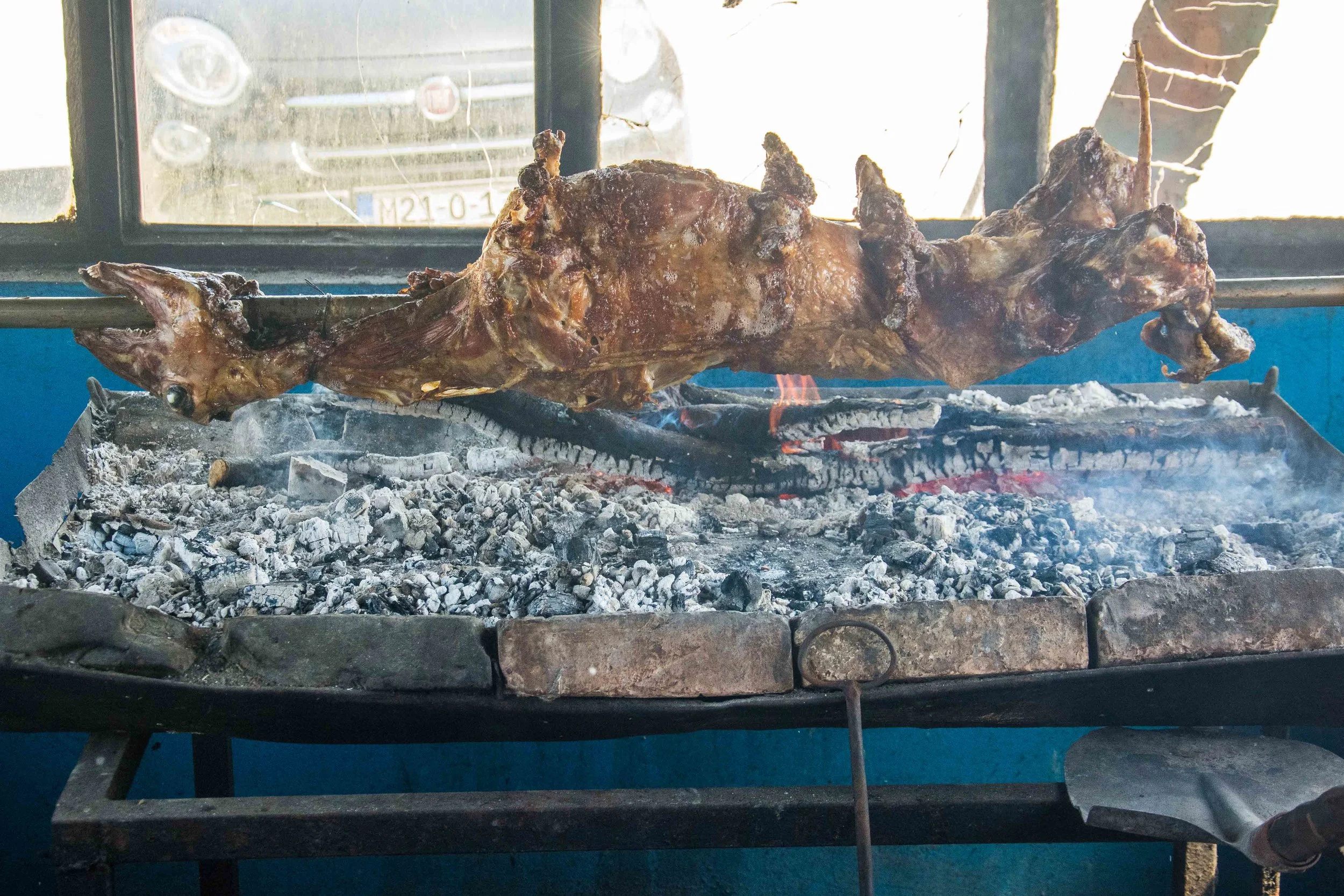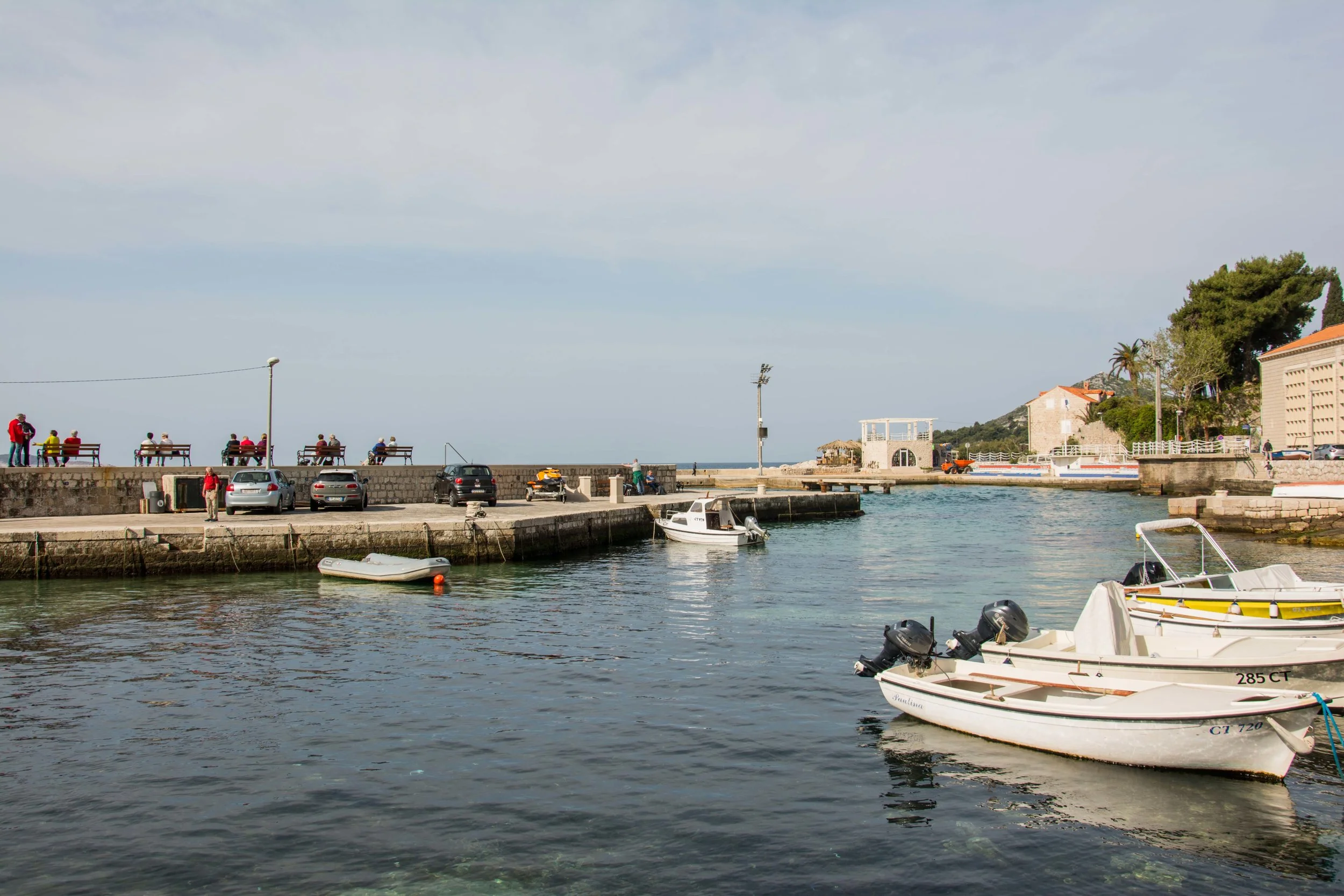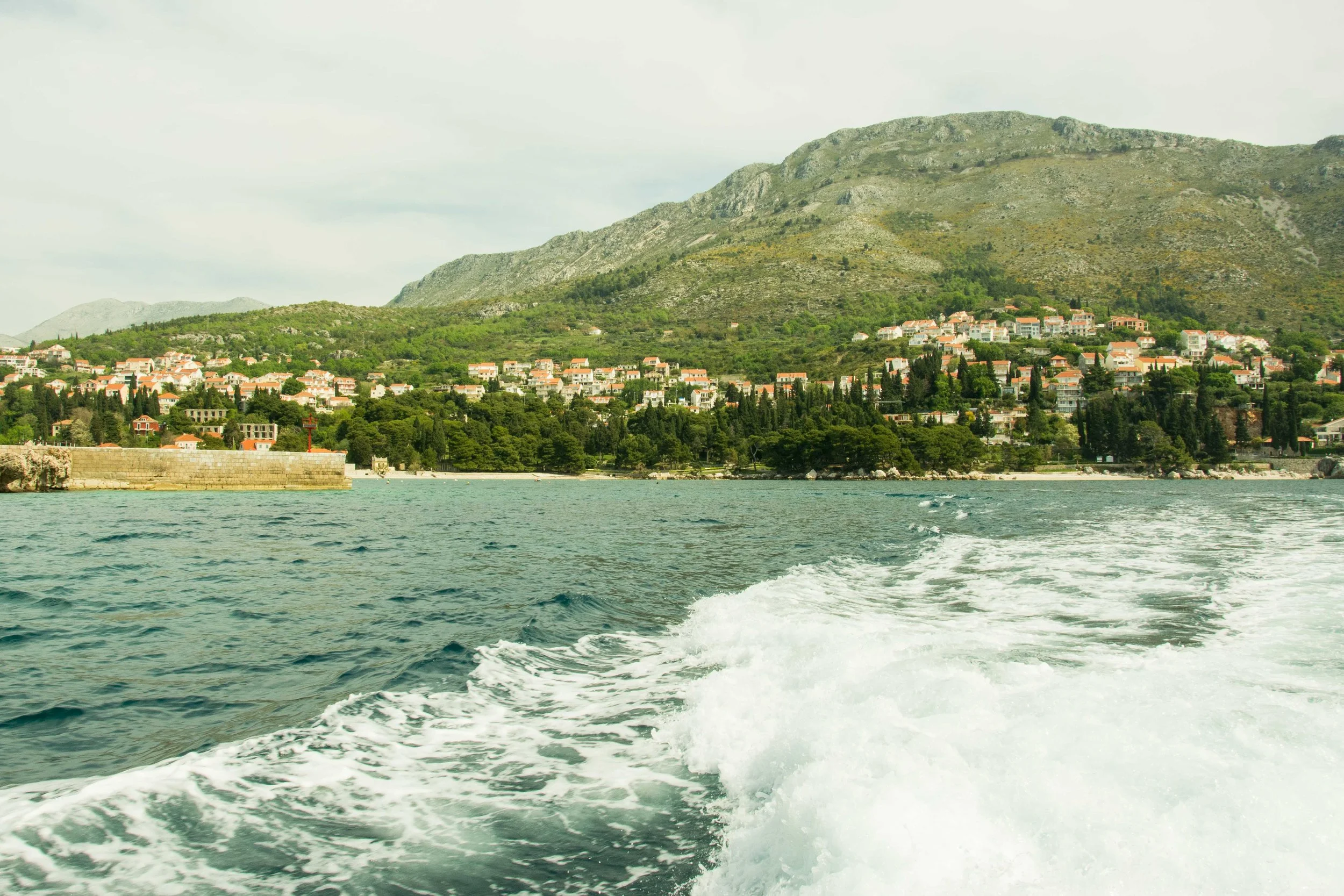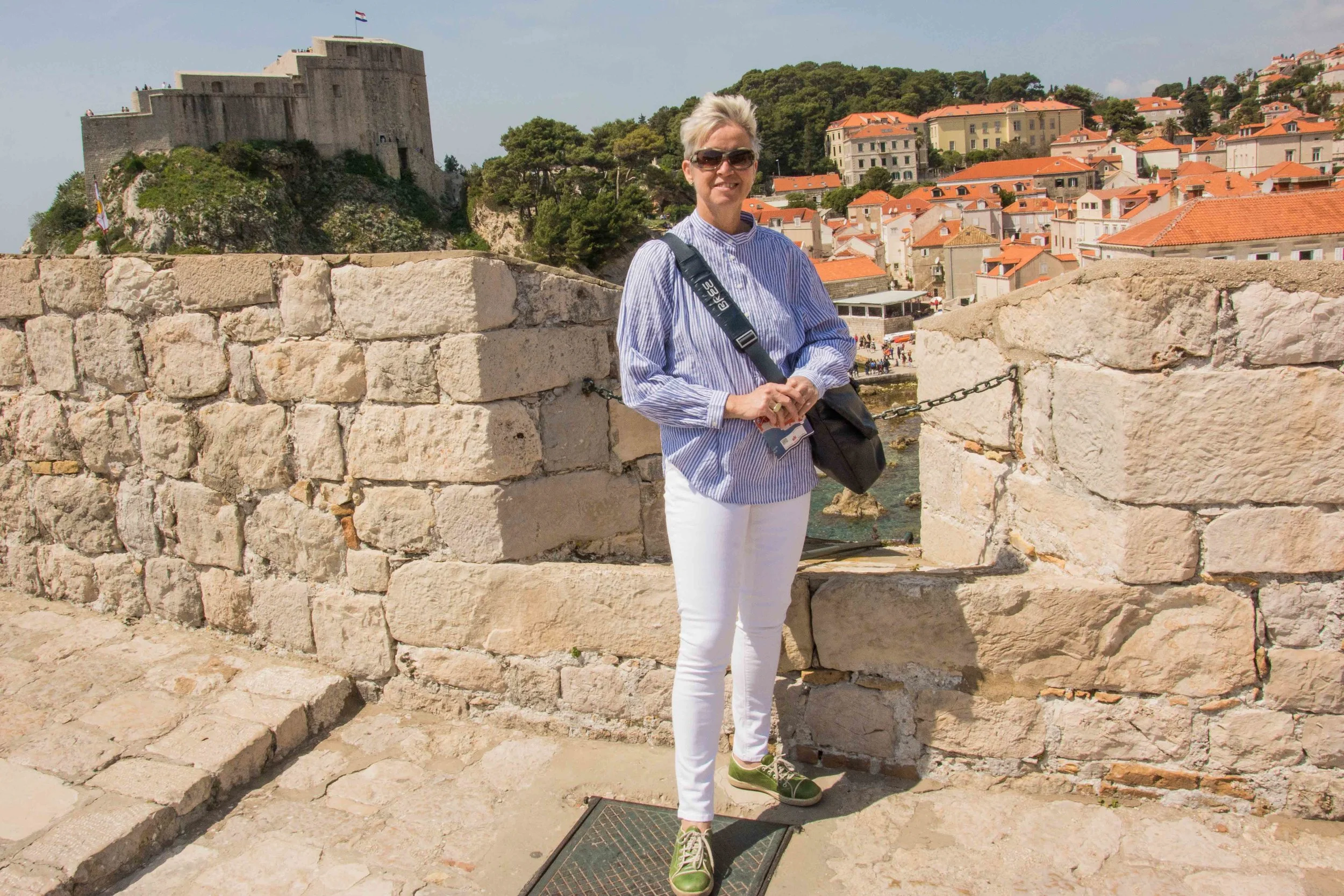The trip did have a particularly auspicious start. Waiting at Mittelhausern station I found I had left my driving licence at home; no problem, Ursula had hers. After a short, 1 ½ hour flight, we arrived in Tuzla. By the time we had gone through the customs formalities most of the luggage had been collected. And guess what, ours was not there. However, a similar suitcase remained on the concourse. It seemed someone else had taken our suitcase in error and left theirs. After renegotiating the car rental with Ursula as the sole driver, we finally left the airport at 11 pm, sans luggage, for our guest house, fortunately only a few hundred metres from the airport.
The owners were still awake and immediately offered us a beer, slivowitz (quince schnapps), and a plate of home smoked chicken breast and sausages. The next morning we bought a bottle of the schnapps from our hosts, checked at the airport for our luggage (still not there) and set off to Mlini. Although only 360 km to Mlini, the roads are narrow and tortuously twist through the mountains, and it was really not possible to average more than about 50 kph. Along the way we stopped for a plate of barbecued lamb for lunch – Bosnians are famous meat-eaters and these barbecue restaurants are found throughout the country.
Lamb on a stick!
As soon as we got to Mlini we were advised by the owner of our guest house that we should go to the shopping centre immediately before it closed. We needed to buy clothes, we only had what we were wearing, and It was Easter weekend and the shops would not open until Tuesday. That done, we went out to explore our immediate surroundings.
Mlini is an idyllic seaside town with a small harbour and served by a ferry service to Dubrovnik and other destinations along the coast. It is very much a popular holiday resort but many of the private houses and apartments were not occupied while we were there. Later in the season the town would be packed. The town looked very well kept, recently painted and neat and tidy. More about that later.
Mlini harbour
Catching the ferry
And so, to Dubrovnik, a 20 minute or so ferry ride away.
Mlini from the sea on the way to Dubrovnik
The ride was calm as the ferry hugged the coast but on the return in the evening a strong onshore wind had sprung up and the ferry bounced merrily through the waves still keeping close, a little too close I thought, to the lee coast. Only one person was seasick and most of us found it mildly exhilarating. Entrance to the town by ferry is through the imposing entrance to the harbour.
Dubrovnik harbour entrance
Here follows a brief history lesson.
The old Dubrovnik is a walled city dating from the 1300s and a UNESCO site, but has a long and complicated history stretching back to Greek times. In 1991 in the break-up of Yugoslavia, Croatia declared independence as the Republic of Croatia. In October 1991 the Yugoslav People’s Army (JNA) made up mostly of Serbs, attacked Dubrovnik with the aim of making Dubrovnik part of Montenegro, and besieged the town for 7 months. During the siege the town was bombarded by the JNA and 114 people were killed and nearly 70% of the buildings in the old town had been hit and several destroyed. The Croatian army liberated the town and the surrounding areas in the second half of 1992. After liberation the damaged buildings were repaired.
End of brief history
Central Dubrovnik
Dubrovnik is a beautiful town with fine churches and civic buildings set in a maze of narrow alleys, some barely 2 metres wide, and winding darkly like narrow ravines between the buildings. An essential part of any visit to Dubrovnik is to walk around the city on the enclosing wall. The wall is nearly 2 km long and the walk, including frequent stops, takes at least 2 hours.
A small section of the wall, old Dubrovnik on the left (perhaps the basketball court is not so traditional)
On the wall
As we walked around the city we both commented on the large number of new roofs which stand out uncomfortably between the older lichen and moss-covered roofs. Later research online revealed that these are the roofs of the 70% of the buildings hit during the bombardment of the city.
Dubrovnik roofs
The ferry ride to Dubrovnik takes you past a bay with what looked like an abandoned tourist development project. This is Kupari and I walked to it round the coast from Mlini. It was a resort set with a number of large modern hotels catering to tourists, set on what is a beautiful bay with the best beach we saw in the area. It was attacked by the JNA navy in October 1991 and heavily shelled to dislodge a unit of the Croatian army. The JNA captured Kupari after 3 weeks by which time it was a complete ruin. The JNA stripped anything of value that remained. Local politics mean that it has never been rebuilt. It was a sobering and very moving experience to wander through the wreckage of the old Grand Hotel and the remains of the more modern hotels.
The wreck of the Grand Hotel
The swimming pool at what remains of one of the more modern hotels
Looking over Kupari Bay, all the hotels and buildings have been abandoned
As we later learned, Mlini had suffered in a similar way to Kupari. It had been occupied by the Serbs during the war and most of the inhabitants had fled. The town was shelled, looted, burned and left devasted by the retreating Serb forces in May 1992. This charming seaside town has been almost completely rebuilt since the war. So much for superficial first impressions.
Kupari memorial
Kupari graffiti and the black humour we found so common
We took a day trip by to the town of Cavtat, a short ferry trip along the coast from Mlini. It is a beautiful little town and popular tourist destination with harbour on both sides of a peninsula.
Cavtat across the moorings
Every second house seemed to be a B&B or similar. Cavtat was founded by the Greeks several centuries BC and there are apparently archeological sites there, but the tourist information office gave us only the vaguest of directions and told us that anyway, they were “not very interesting”. We did look but failed to find the site(s).
After this short but really worth while visit to the Croation coast we left to drive north toward Mostar and Sarajevo, but this will be for next week. By the way, we had heard that our luggage had turned up an hour or so after we had left for Mlini. A work colleague of Ursula’s had collected it for us and it was waiting for us in Tuzla. So now we had 2 sets of clothes!
Ursula at Cavtat peninsula with Mlini in the distant background
Impressions: Croatia, or at least the very small part we saw of it is fascinating and beautiful. We would love to return to it if we ever get the opportunity. The coast is a series of beautiful bays and the sea is a mosaic of thousands of islands. Sailing here would be wonderful, but definitely avoid the tourist season of high summer.
The people we met did not volunteer any information about the 1991 war, unlike the “war tours” we would experience in Sarajevo.















